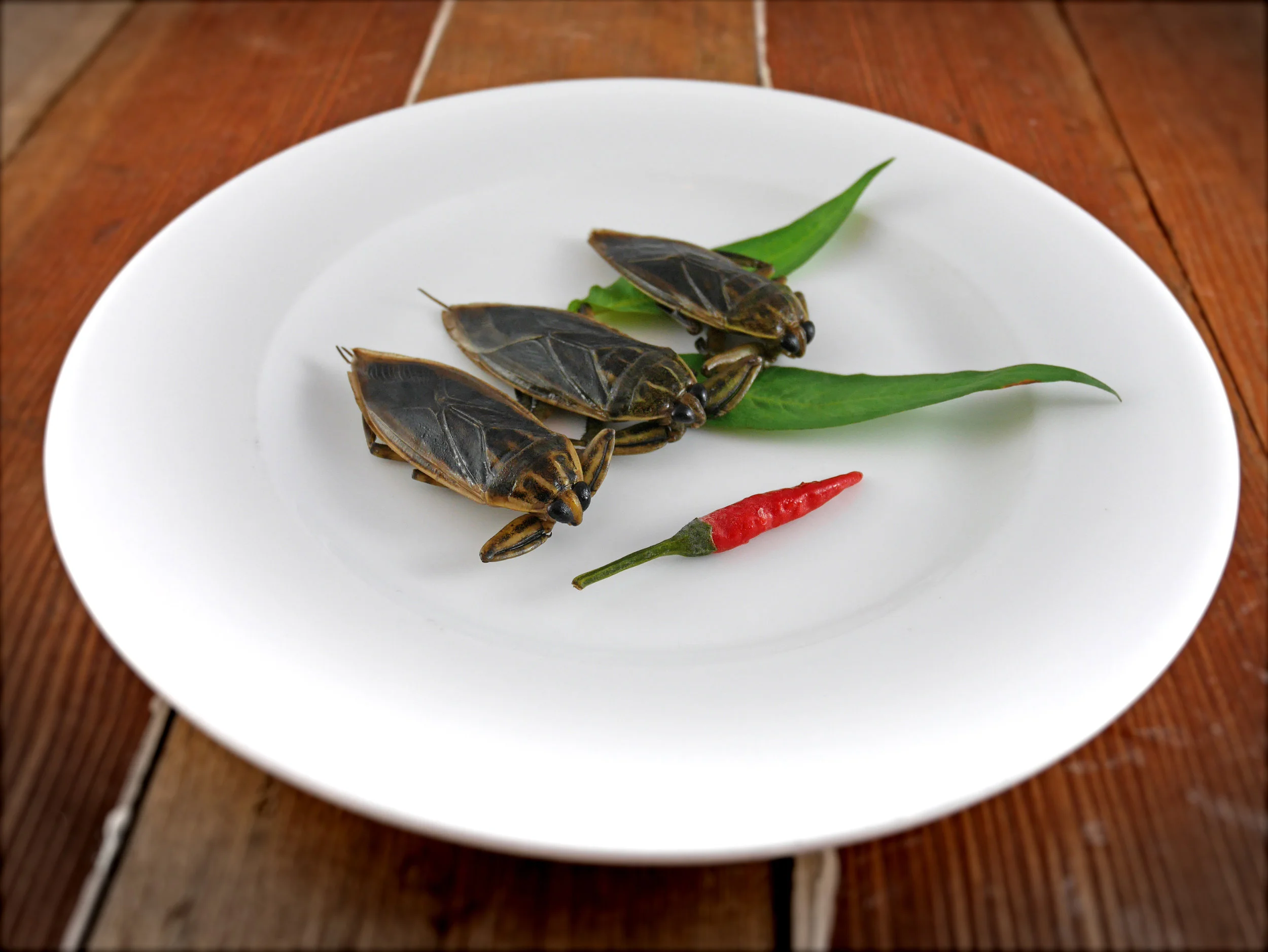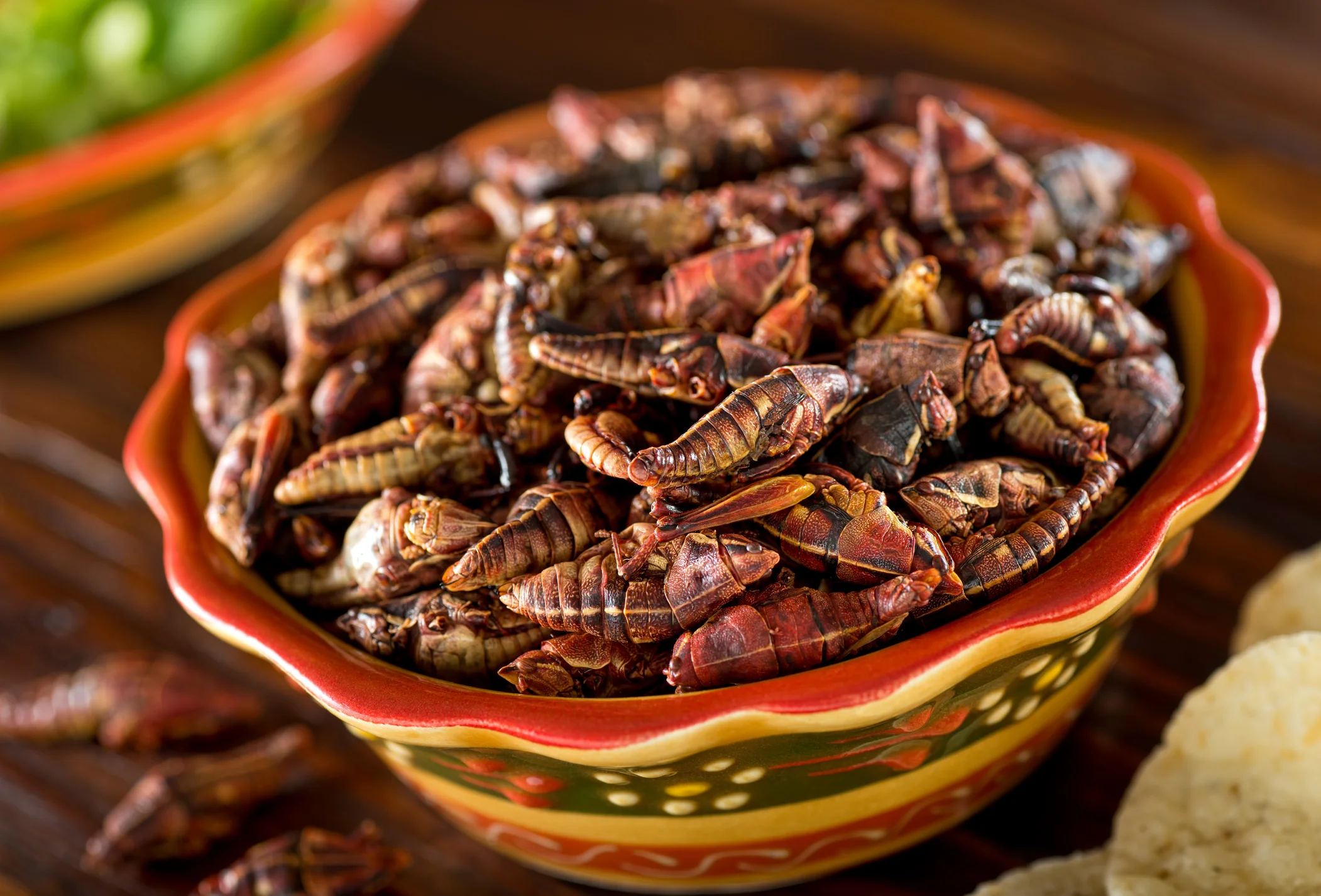My friend Michelle and I eat bugs together. It all started about a year and a half ago. We went to see Cirque du Soleil's insect-themed show Ovo in Loveland, Colorado. We were so excited that we dressed up for the occasion, she as a bee and I as a mantis. We looked so good that other spectators thought we were part of the show. Some stood in line to take pictures with us during intermission. If what's left of my memory serves me correctly, some even tipped us. I was so inspired that I went home and wrote an insect-themed song called “Butterflies.” It's a bona fide ear worm.
The following day, I picked up a cricket protein bar from Natural Grocers and shared it with Michelle at an AcroYoga jam. My own personal interest in edible insects began with a book written by National Geographic-caliber photojournalists called Man Eating Bugs, but intensified after seeing Denver cricket rancher Wendy Lu McGill speak on the subject at a 2013 TEDx RiNo event. Michelle was one of the first to share my enthusiasm for entomophagy – the practice of eating bugs.
Thanks to social media, many of our friends are familiar with our fondness for six-legged fare. One such individual is a go-go dancer and aspiring pastry chef named Jessica. In the green room at Global Dance Festival, a long-running Denver EDM event we were all three involved with, Jessica mentioned that she'd eaten silkworm pupae before. I'd read about the delicacy and had been dying to try it. Jessica explained that her Korean-born father had prepared it for the family when she was young, and that he might be willing to make it for Michelle and I sometime. Music to my ears.
Jessica's dad was game. Michelle and I carpooled to his apartment on the designated day. Jess, Michelle and I soon found ourselves watching her father vacuum the hyperactive family Pomeranian. Once the dog was relieved of loose hair, the old man set about preparing his spin on Korean-style “beondegi.” He started with marinated pupae from small cans he'd gotten at the Asian market. Fresh green onion and diced pepper spiced up the exotic snack. Following an appetizer plate of yellow Korean melon, we were chopsticking the littler buggers into our curious mouths in no time. The brown segmented pupae are about the size of kidney beans (see above photo). Each pupa pops a little when you bite into it and they're definitely a smidgen chewy. This particular batch had a bit of heat to them, which Michelle and I definitely appreciated. Our insatiable thirst for culinary adventure had once again led us to an interesting place.
When Jessica was young, she was apparently clueless as to what beondegi consisted of. She apparently stopped eating it for years when she eventually found out. Fortunately, she's old enough now to once again appreciate the unique Korean grub.










